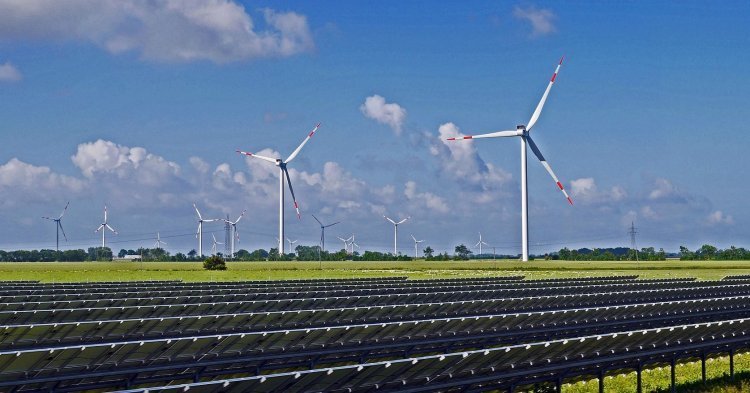Earlier, I have discussed the search for an equilibrium between competition policy and industrial policy in the European Union. The European treaties and the policy of the European Commission show a strong imbalance in favour of competition policy, a “constitutional principle” of the EU. However, we cannot say that there is a total contradiction between these two policies: industrial policy also has a tendency to develop thanks to exception systems set out in the articles of the TFEU concerning agreements between enterprises, abuses of dominant position and state aid, as well as the Council Regulation No 139/2004 on the control of concentrations between undertakings.
The third paragraph of Article 101 of the TFEU allows ‘technological agreements’ (research and development agreements and licensing agreements) as long as they do not impose provisions that are overly conflicting with competition law. The General Block Exemption Regulation (GBER) authorises state aid in specific sectors: research and innovation, energy transition, job creation, competitiveness of the European industry, and economic and social cohesion. These categories of exemption can be viewed as the beginning of a European consensus on an industrial policy, focused on objectives but not on the means (concerning the role of public intervention, there is no consensus between different European countries).
However, two sectors among these exemptions can be the basis of a true active industrial policy, enabling the European economy to be fully competitive in the world: research and innovation, as well as energy transition. More specifically, the intersection between these two sectors – innovative energy transition – would allow the EU to overcome a great number of challenges in this unstable 21st century. This is a plea for a green, sustainable and innovative energy transition on which a strong industrial policy can be built.
Towards an innovative energy transition: the Energy Union and the “SET Plan”
The EU has had competence in energy policy since the ratification of Lisbon Treaty and the introduction of Article 194, even if before this already, the EU had already begun legislating in the sector essentially thanks to the first Green Paper, “Towards a European strategy for the security of energy supply” (2000). European energy policy has pursued several goals since 2009: the proper functioning of the energy market, security of supply, energy transition (energy efficiency and the development of renewable energies), and interconnections between European countries.
The integration of the internal energy market being highly complicated (the member States are particularly protective of their energy sovereignty), the Energy Union was established in 2015 in order to relaunch this integration. This strategy is based on five pillars: security, solidarity and trust, integrated internal energy market, energy efficiency, decarbonisation of economy, research, and finally innovation and competitiveness. The last pillar on innovation is all the more important because it is transversal – all other pillars are concerned by energy innovation.
The integrated Strategic Energy Technology Plan represents this fifth pillar. It is the adaptation of the SET Plan (established since 2008) to the goals of the Energy Union. This plan for strategic energy technologies can be structured around ten goals, based on five priorities of the integrated SET Plan: leadership in renewable energies, a smart energy system with consumers at the centre, efficient energy systems, sustainable transport and, fifthly, the priority of integrating carbon storage and nuclear safety. To translate these goals in real terms, the SET Plan has set up European cooperation structures gathering universities, research centres and firms: European Energy Research Alliance and European Technology and Innovation Platforms.
Deep cooperation between universities, research centres and firms
The heart of European action lies here: cooperation between different actors all along the innovation chain. The European Energy Research Alliance is the platform of the SET Plan fostering upstream research thanks to intense pan-European cooperation programmes (250 research centres of 30 countries are committed in 17 programmes) in accordance with the SET Plan goals. As for European Technology and Innovation Platforms, these represent the other side of energy research, where the cooperation with the industry is the strongest. Thus, ten platforms are devoted to mutualisation of funds, expertise and research infrastructures in order to enhance the industrial deployment of energy technologies. The coordination between all these initiatives is provided by the steering group of the SET Plan, composed of high representatives of partner countries.
The SET Plan is the main European initiative promoting the development of clean energy technologies. However, other institutions exist. The European Institute of Innovation and Technology (EIT) is an independent public European institute established on 2018 and headquartered in Budapest. Its goal is to facilitate innovation via the knowledge and innovation communities (that is, great integration between research centres, universities and firms). The “InnoEnergy” community is an example of appropriation of energy technologies by industry, assembling 67 partners of which half are firms, since 2011. InnoEnergy is a societas europaea (SE), a common status recognised in the 28 EU Member States, which enables development of its activities in the single market and constitutes a very good example of creating European firms supporting a European policy in energy technologies.
Unfortunately, the potential of these cooperation initiatives is not optimised. This is what the European Commission asserts in its communication, “Towards an Integrated Strategic Energy Technology (SET) Plan: Accelerating the European Energy System Transformation”, from 2015. In particular, the European Energy Research Alliance and European Technology and Innovation Platforms do not go far enough in the cooperation and do not keep up with the SET Plan’s aims.
We can see more broadly that while the EU is a pioneer in many energy technologies, its firms can hardly compete with American or Chinese rivals. Photovoltaic industry is an iconic example: European industry has been destroyed by Chinese dumping. In this perspective, what can the EU do to develop a strong industrial policy for innovative energy transition?
Going further for a clean, sustainable and innovative industrial policy
The European economy will be technological and sustainable – or it will no longer be. That is why the EU must make huge investments in an innovative energy transition. The Horizon 2020 programme concentrates these subsidies on sustainable projects but this is not enough. A truly effective carbon market would allow for saving more money. Moreover, the Juncker Plan and the European fund for strategic investment attract many private investments in innovative and sustainable energy projects (even if it is not the case in every country). The question of a European budget much greater than the multiannual financial framework for 2014–2020 (€963,5 billion) must be discussed, although the political will is close to zero. However, the proposal for a real “Green New Deal” would be particularly valuable for the EU, the Member States and its citizens.
The priorities of the SET Plan integrated to the Energy Union must be reinforced and actively supported by the European Commission by encouraging the formation of European consortiums specialised in clean energy technologies, using both technological and process innovations. We would need more of “InnoEnergy”, and more integrated structures to face the challenge.
In the same way, the European Commission, the Council of the European Union and the European Parliament should foster the formation of European firms in every sector of the European economy, demanding these firms to conform to the new realities of the low-carbon knowledge economy. This would enable the European economy to have comparative advantages vis-à-vis the rest of the world, ensuring that workers won’t be victims of structural changes.
For now, the European Social Fund and the European Globalisation Adjustment Fund get on with the combat against expulsion and declining social status. A transition mission orientated towards a clean and innovative economy might be added. The European industry will have to be synonymous with sustainable and well-paid jobs: that is essential for the continuity of the European project and citizens’ support for it. The size of the challenges of the 21st century requires an ambitious and active response from the European Union, a response which plays a great part in its future.




Follow the comments: |
|
